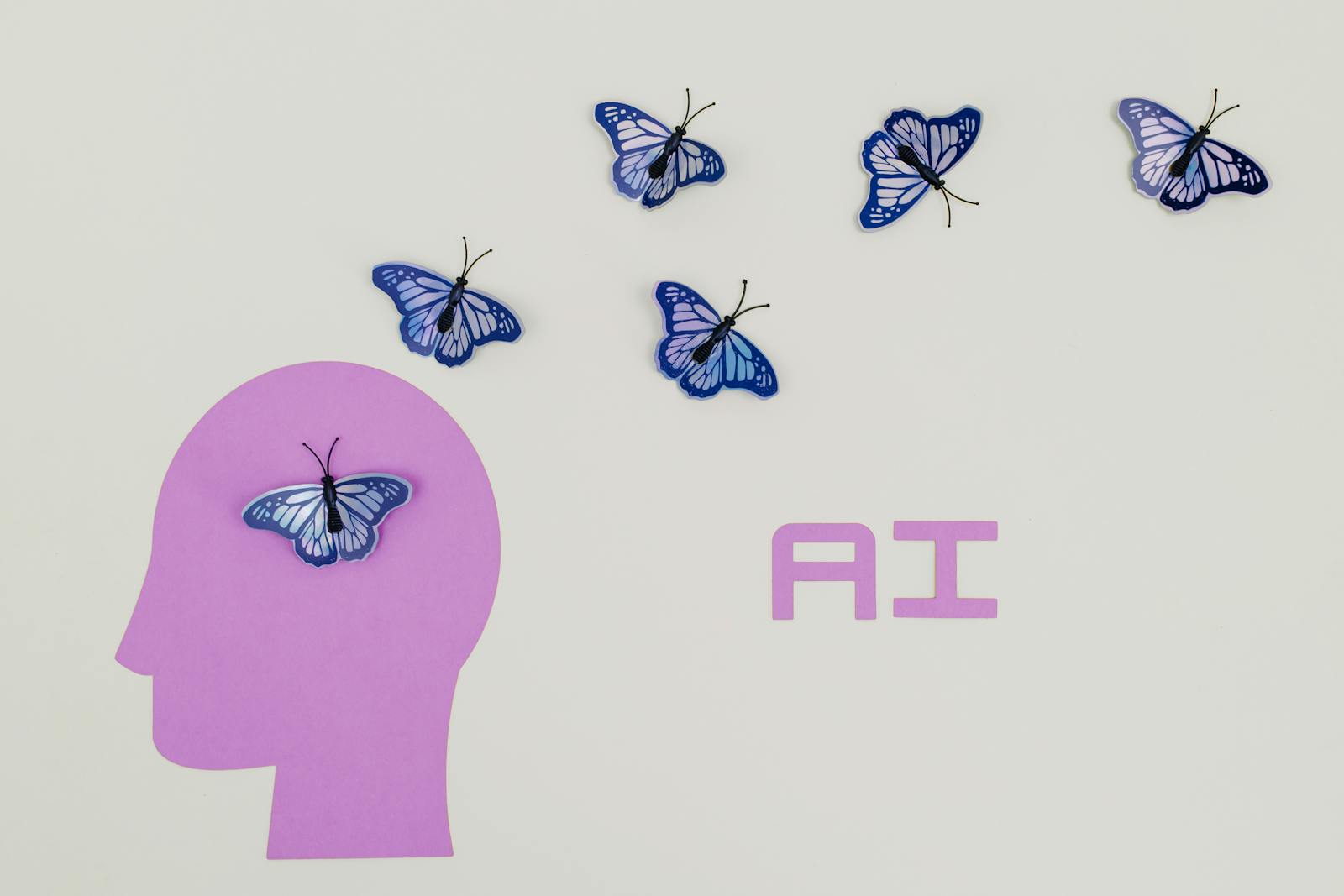We’re living in a time of rapid technological change, aren’t we? It feels like every week there’s some new gadget or software that promises to change how we live, work, and interact. It can be a bit overwhelming, trying to keep up. But honestly, it’s also incredibly exciting. What’s really going on behind the hype? What are the actual technologies that are quietly, or not so quietly, reshaping our future? It’s not just about the next shiny phone; it’s about bigger shifts in how we understand and interact with the world. This piece is a look at some of the tech that’s truly making waves, the ones with the staying power to redefine what’s possible.
Artificial Intelligence and Machine Learning: More Than Just Chatbots
Okay, so AI and machine learning are everywhere, right? You can’t scroll through tech news without seeing something about it. But it’s easy to get caught up in the immediate hype – like those AI chatbots that can write poems or answer trivia. That’s cool, sure, but the real impact of AI goes much deeper. Think about it like this: AI is essentially teaching computers to learn from data, to recognize patterns, and to make decisions or predictions, kind of like how we do, but often much faster and on a massive scale. Machine learning is the engine that drives a lot of this learning.
Right now, AI is already working behind the scenes in so many ways. Your email spam filter? That’s AI. The recommendation engine on your favorite streaming service? Yep, AI. Even things like fraud detection in banking and the medical imaging analysis that helps doctors spot diseases earlier – these are powered by AI. The real potential lies in its ability to process vast amounts of information that would be impossible for humans to handle. This means we can tackle problems that were once too complex, from climate modeling to discovering new drug compounds. We’re starting to see AI being used in agriculture to predict crop yields and optimize resource use, and in transportation to manage traffic flow more efficiently. It’s moving beyond just analysis and into active management and creation.
How do you even get started with this stuff, you ask? Well, for individuals, playing around with free AI tools online is a good first step. You can experiment with image generators or language models to get a feel for their capabilities. For businesses, it often starts with identifying a specific problem that AI could help solve. The common pitfall here is thinking AI is a magic bullet. People often expect it to solve everything perfectly right out of the box, but that’s just not how it works. You need good quality data, and you need to understand the limitations of the specific AI models you’re using. It gets tricky when you move from simple pattern recognition to more complex decision-making, especially in areas with ethical implications. Small wins, like automating a repetitive task with a simple AI script, can build confidence and demonstrate value. The tools are becoming more accessible, with platforms like Google AI Platform, Amazon SageMaker, and Microsoft Azure Machine Learning offering services that simplify some of the complex underlying technology.
The Rise of Extended Reality (XR): Blending Digital and Physical Worlds
When people hear “XR,” they often think of virtual reality headsets and video games. And yeah, that’s part of it. But XR is a broader term that includes virtual reality (VR), augmented reality (AR), and mixed reality (MR). It’s all about creating more immersive and interactive digital experiences, and importantly, blurring the lines between our physical and digital lives. VR completely immersizes you in a digital world, AR overlays digital information onto the real world, and MR blends the two, allowing digital objects to interact with your physical environment.
Think about how this changes things. In gaming and entertainment, it’s obvious. But the real shifts are happening in education and professional training. Imagine medical students practicing surgery in a realistic VR simulation before ever touching a real patient. Or architects walking through a full-scale virtual model of a building before construction begins. AR is already appearing in everyday applications, like furniture apps that let you see how a couch would look in your living room, or navigation apps that overlay directions onto your view of the street. What really gets exciting is when you think about remote collaboration. XR could allow teams dispersed across the globe to feel like they’re in the same room, interacting with 3D models and shared digital workspaces in a much more natural way than a video call.
Getting into XR can feel daunting. For consumers, it means picking up a VR headset or using AR features on a smartphone. These are becoming more affordable and user-friendly. For developers, it involves learning new software development kits (SDKs) and 3D modeling tools. Some common tools for AR development include ARKit from Apple and ARCore from Google, along with game engines like Unity and Unreal Engine, which are essential for creating immersive VR experiences. What people often get wrong is underestimating the hardware requirements and the complexity of creating truly compelling XR content. It’s not just about slapping a 3D model into a scene; it’s about creating an experience that feels intuitive and valuable. Where it gets tricky is in the user interface design for 3D environments – how do you interact with virtual objects without it feeling clunky? And for AR, precisely mapping the real world so digital objects behave realistically is a significant challenge. Small wins include creating simple AR filters for social media or using VR for guided meditations. These experiences show the potential and build familiarity with the technology.
Advanced Connectivity: 5G, Wi-Fi 6, and Beyond
We talk a lot about the cool gadgets and software, but all of it needs a way to communicate, right? That’s where advanced connectivity comes in. Think 5G mobile networks and the latest Wi-Fi standards like Wi-Fi 6. These aren’t just about making your phone download movies faster, although that’s a nice perk. They are foundational technologies that enable many of the other future innovations we’re discussing.
What’s the big deal? Well, 5G offers much higher speeds, significantly lower latency (that’s the delay between sending a command and getting a response), and the ability to connect many more devices simultaneously. Wi-Fi 6 does similar things for local networks. This kind of performance is critical for things like real-time remote surgery, truly autonomous vehicles that need to communicate instantly, and the massive rollout of the Internet of Things (IoT) devices. Imagine millions of sensors in a smart city – from traffic lights to environmental monitors – all communicating without a hitch. Or consider the enhanced experiences in XR, where lag can break the immersion; low latency is key. It also opens doors for new types of cloud-based computing where processing can happen almost instantaneously, giving even small devices powerful capabilities.
Starting with advanced connectivity is often about upgrading your existing equipment. For consumers, this might mean getting a 5G-compatible phone or a Wi-Fi 6 router if your internet service provider offers it. For businesses, it can involve planning for network upgrades to support an increasing number of connected devices. What people often get wrong is thinking that simply having a 5G phone means you’ll automatically get these amazing benefits everywhere. Coverage is still rolling out, and the full potential is realized when multiple technologies work together. Where it gets tricky is in the sheer scale of deployment needed to make these networks truly ubiquitous and secure. Managing the security of billions of connected devices is a huge challenge. Small wins include experiencing faster downloads on your commute or enjoying smoother video calls with less buffering. These tangible improvements show the immediate value of better connectivity, building momentum for wider adoption and the more complex applications to come.
Quick Takeaways
- AI is more than just chatbots; it’s about complex problem-solving and automation.
- XR blends digital and physical worlds, with huge potential in training and remote work.
- Advanced connectivity (5G, Wi-Fi 6) is the invisible backbone for many future technologies.
- Data quality and understanding AI limitations are crucial for success.
- XR development requires new skills and careful interface design.
- Connectivity rollouts need time and scale to reach full potential.
- Focus on tangible wins to build momentum in adopting new tech.
So, what’s the real takeaway from all this? It’s that the future isn’t just a collection of cool gadgets; it’s about fundamental shifts in how we process information, interact with our environment, and connect with each other. AI is moving from recognizing patterns to actively helping us make decisions and even create. XR is changing how we experience digital content, making it more embodied and collaborative. And the advanced connectivity that underpins it all is creating the highway for these new possibilities.
It’s easy to get lost in the jargon or feel like these technologies are too complex to understand. But honestly, the best way to approach them is with curiosity and a willingness to experiment. Start small. Play with an AI art generator. Try out an AR filter. See if your home network can be upgraded to the latest Wi-Fi standard. These small steps help build familiarity and reveal the practical value these technologies offer. The real trick is to look past the hype and identify the problems these innovations can genuinely solve. It’s not about adopting technology for technology’s sake, but about how it can improve efficiency, create new opportunities, or simply make life a bit better. The journey is ongoing, and these advancements are just the beginning of a much larger transformation.





